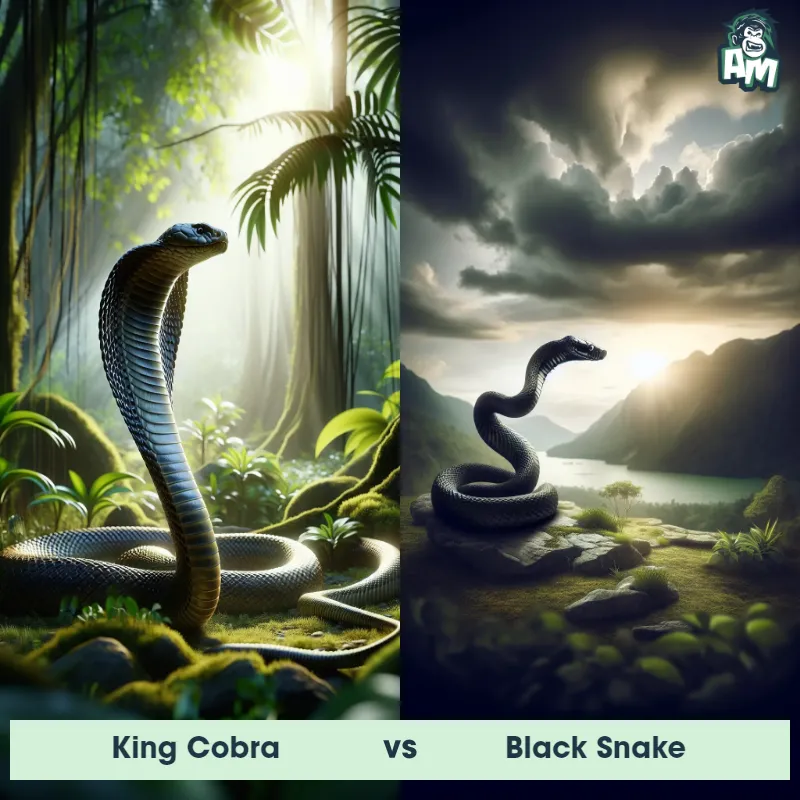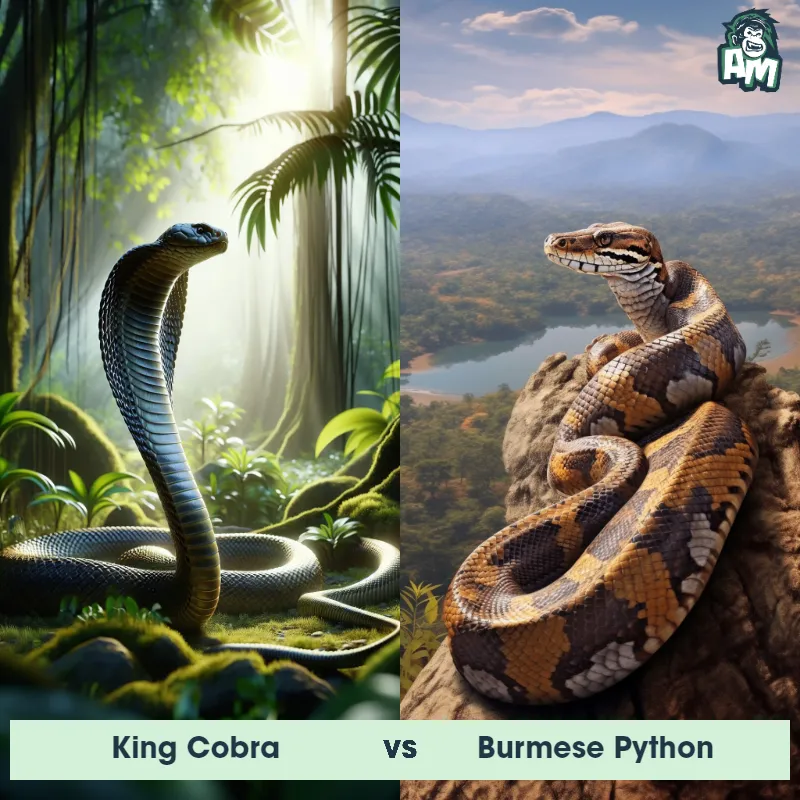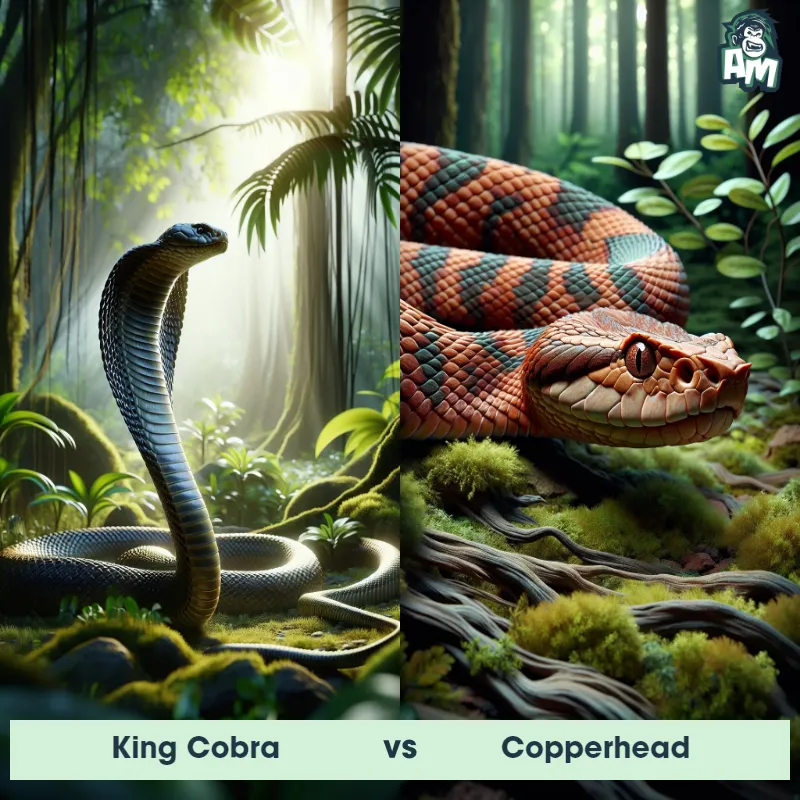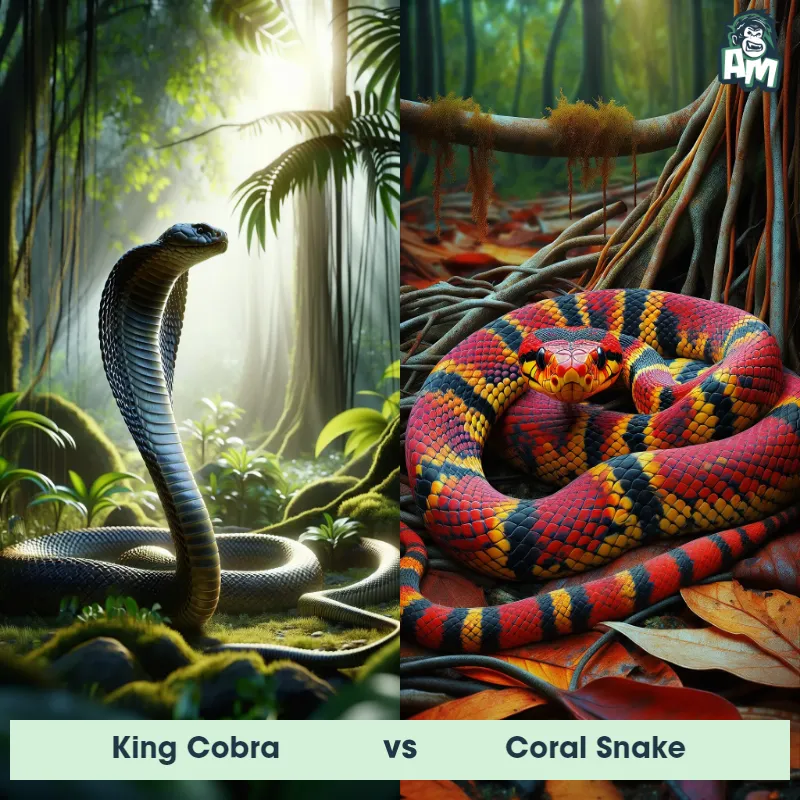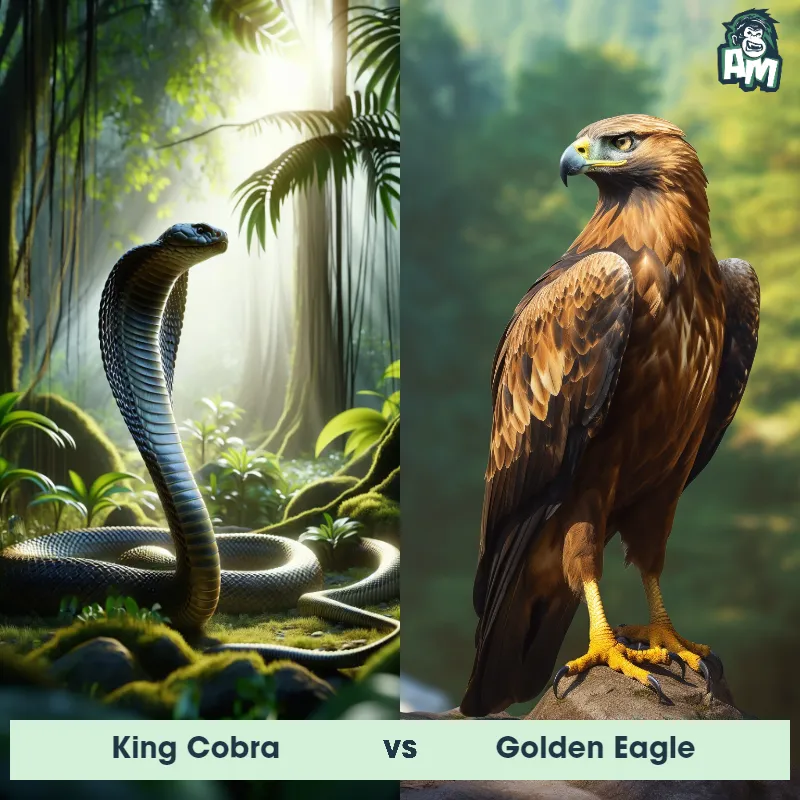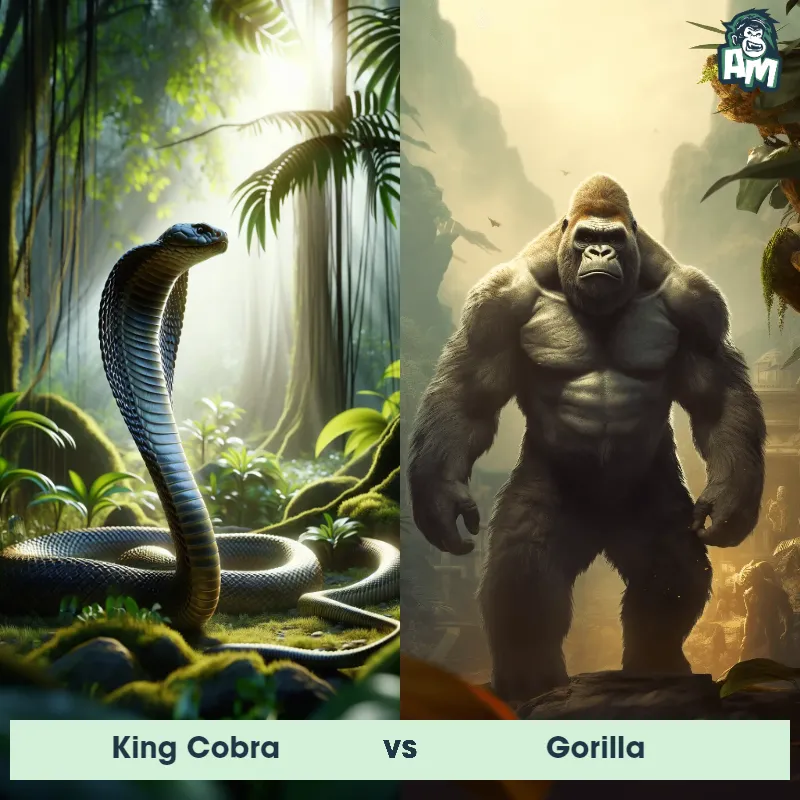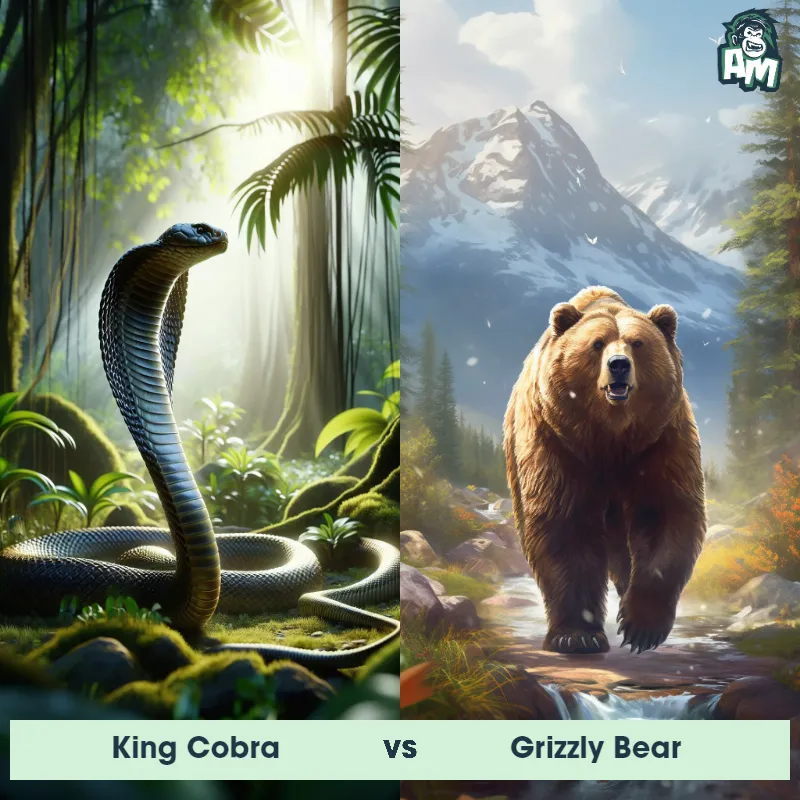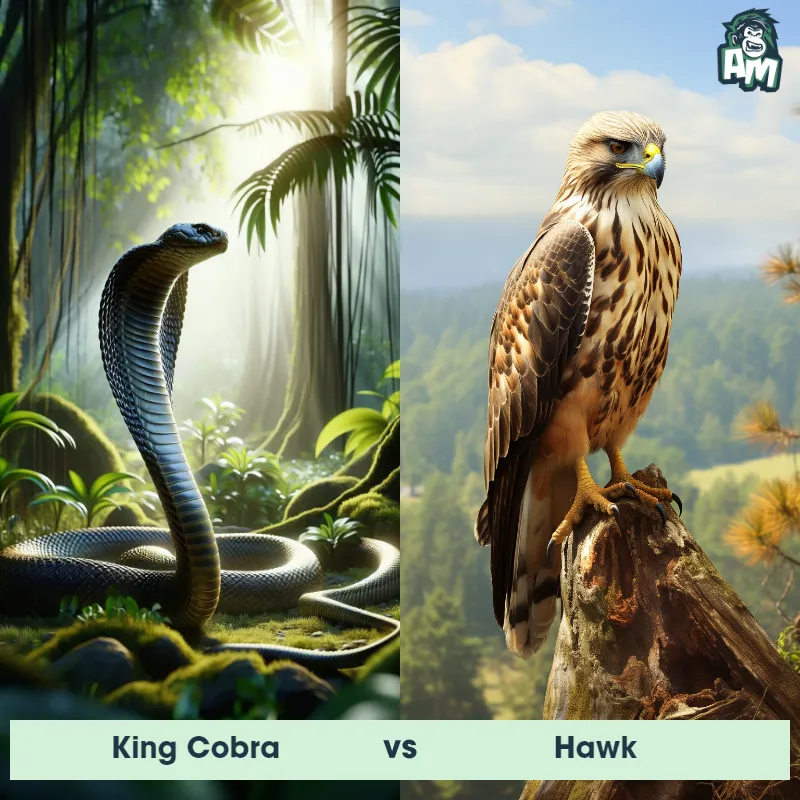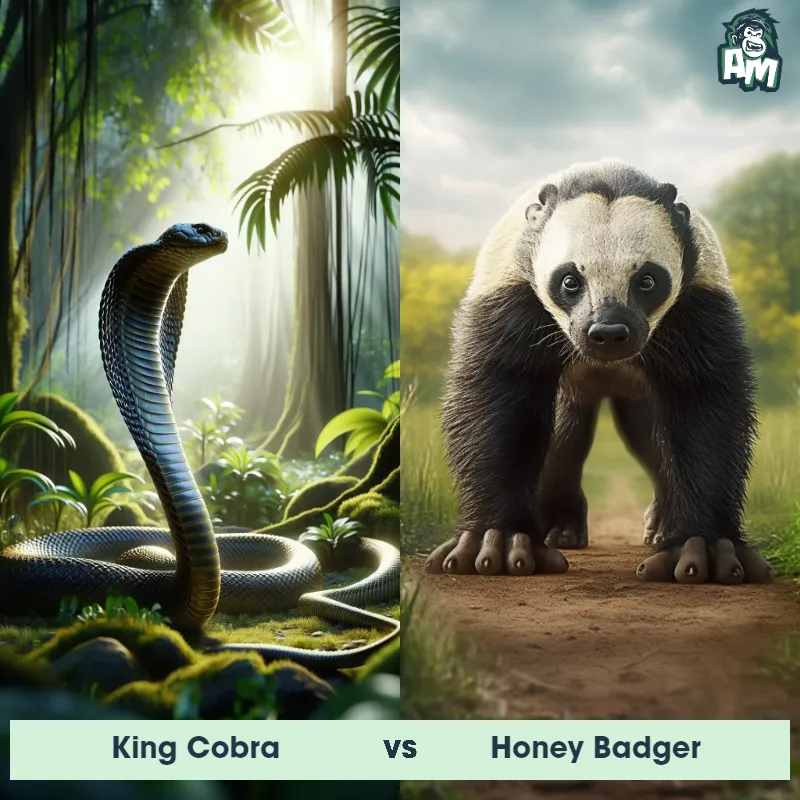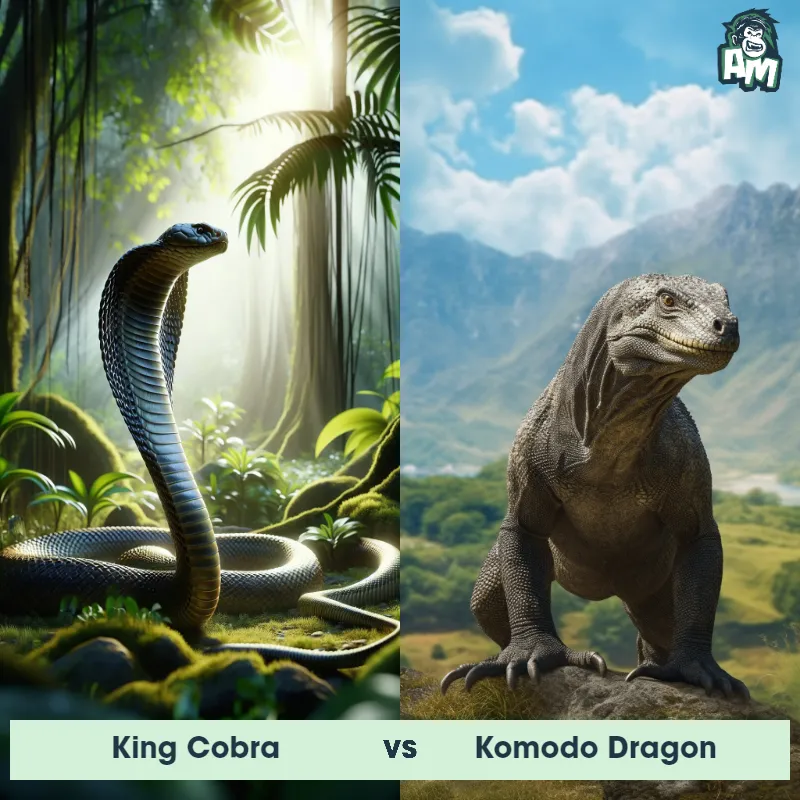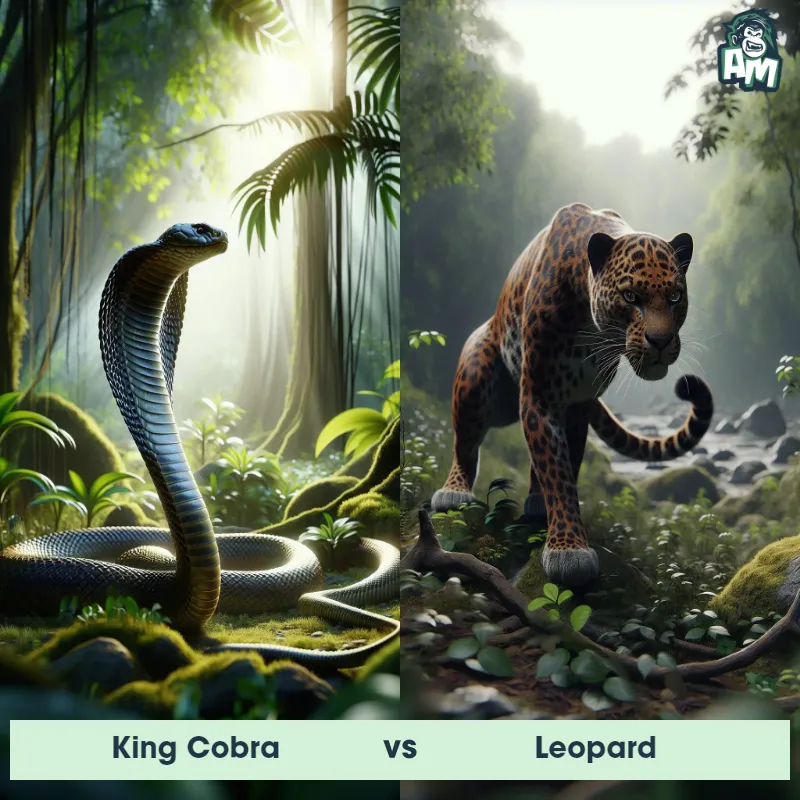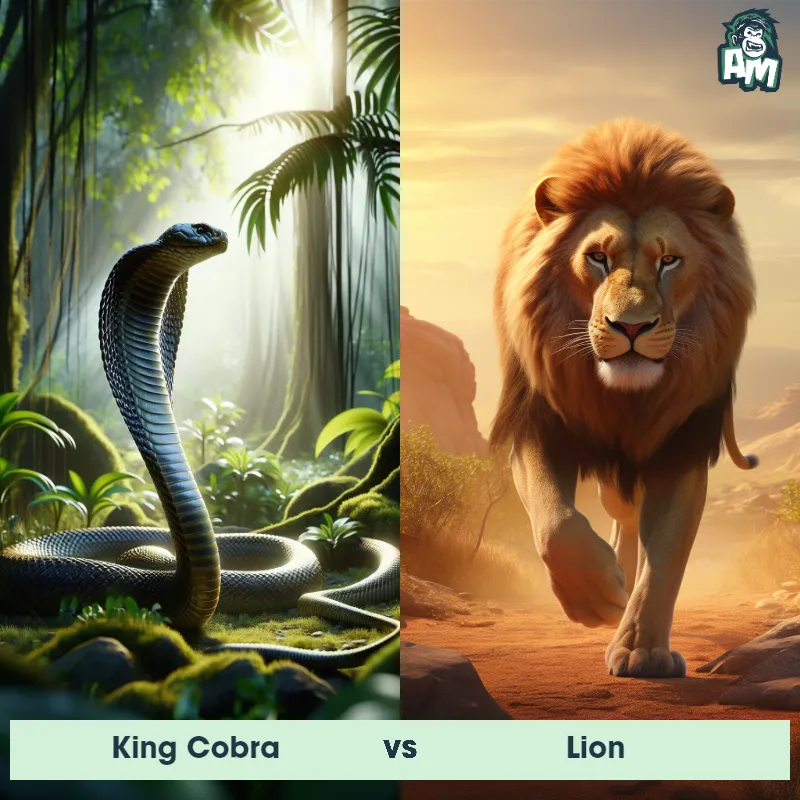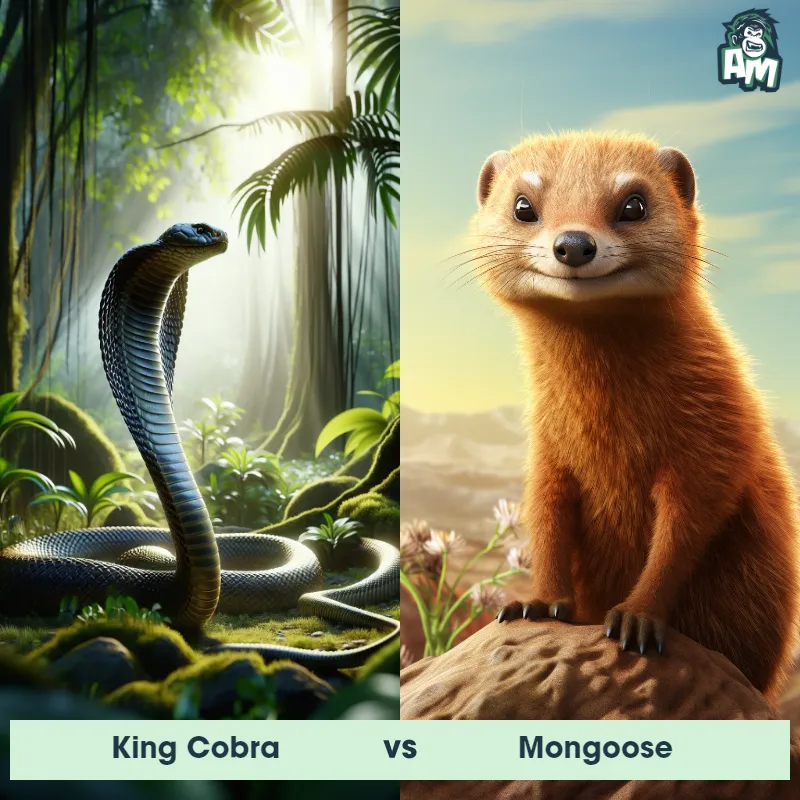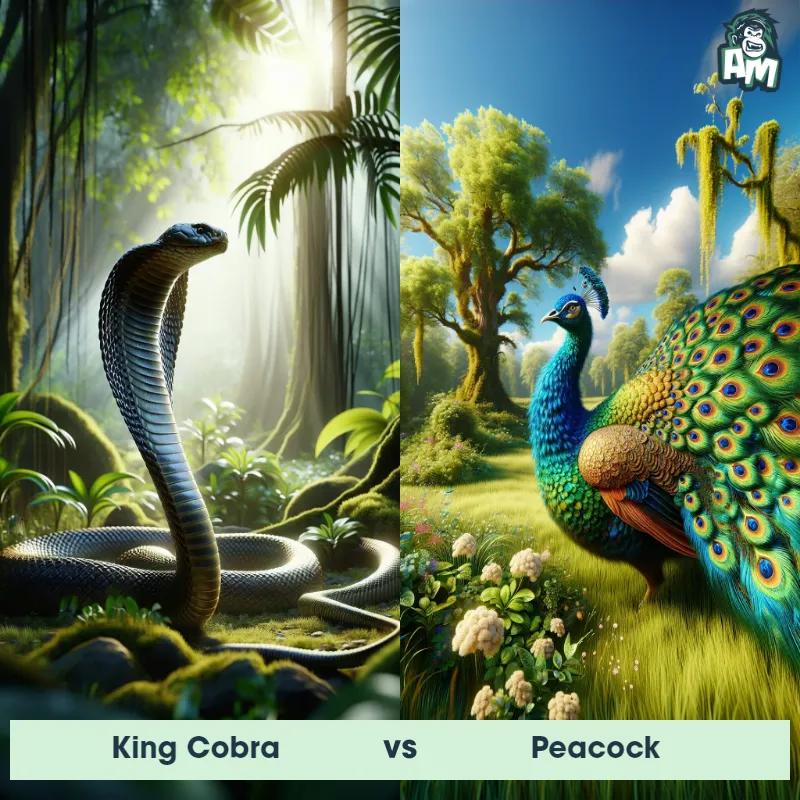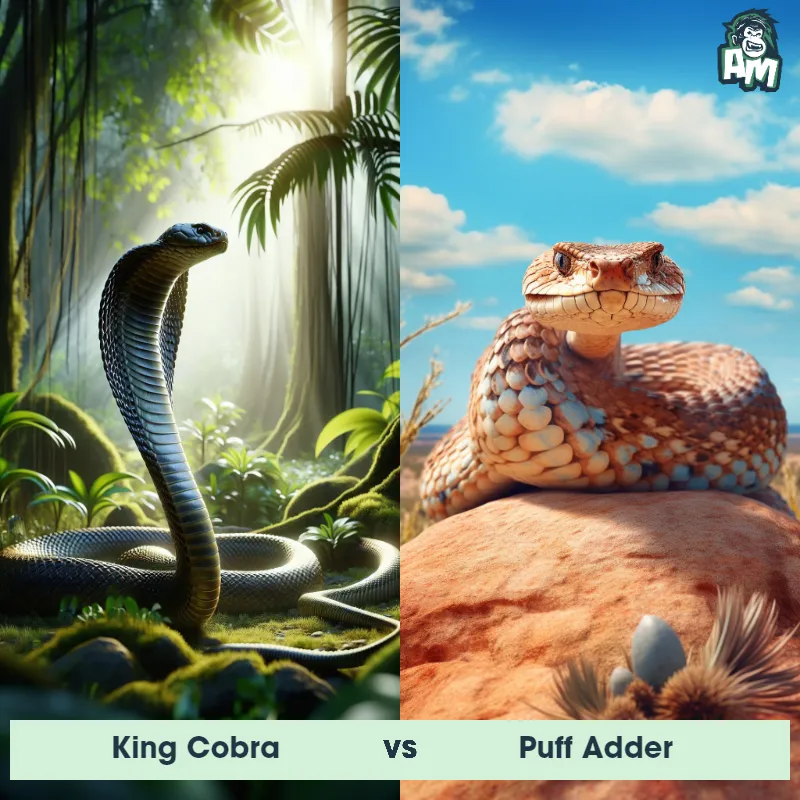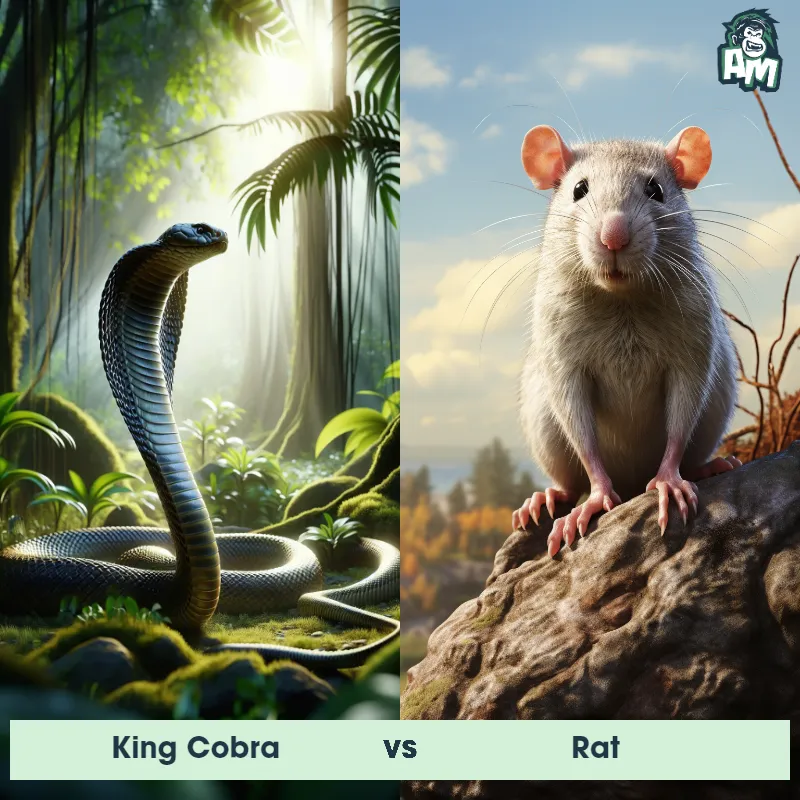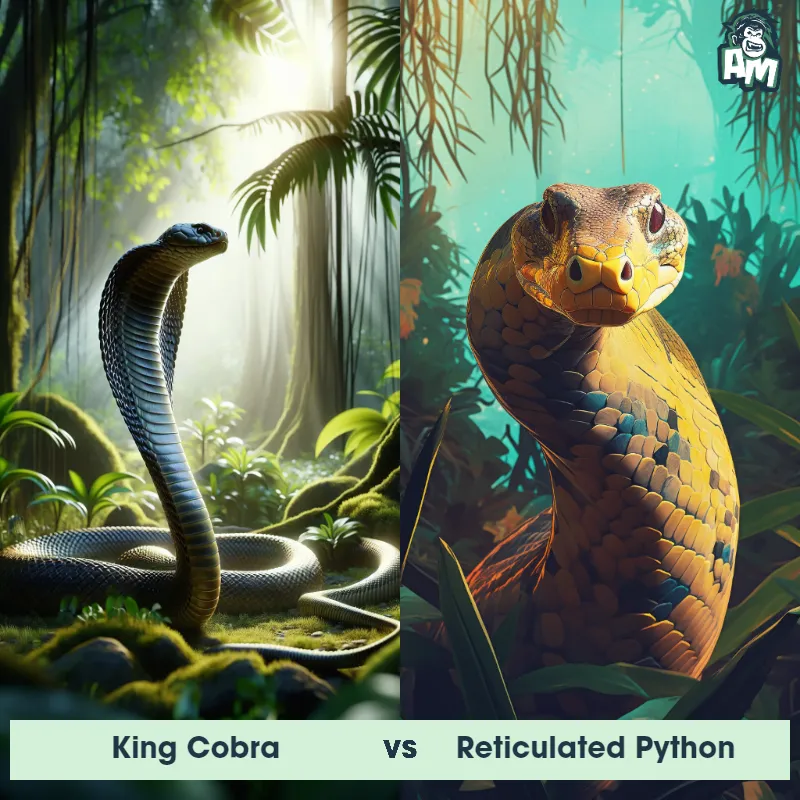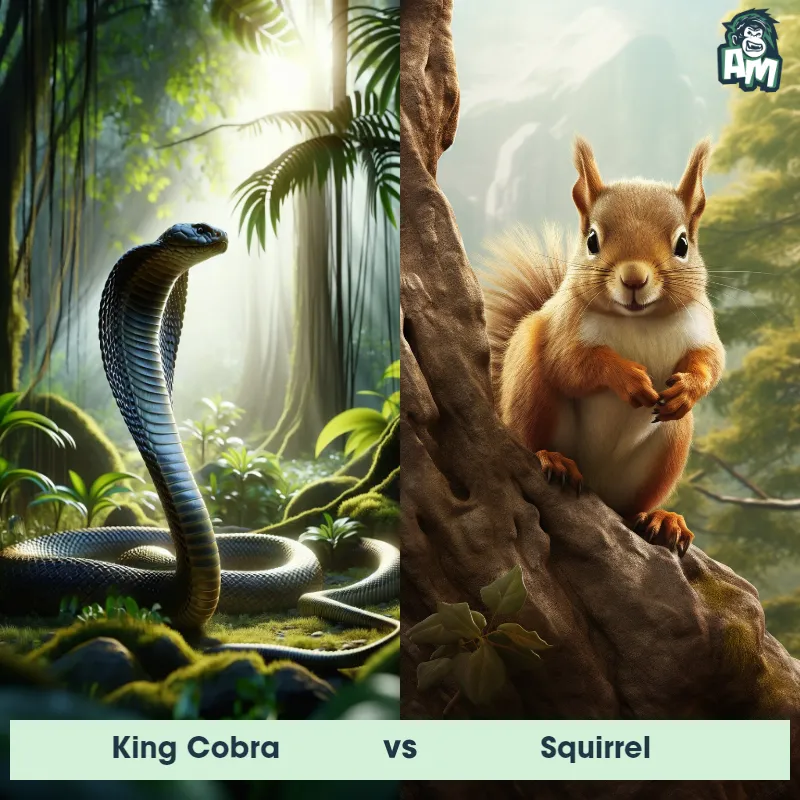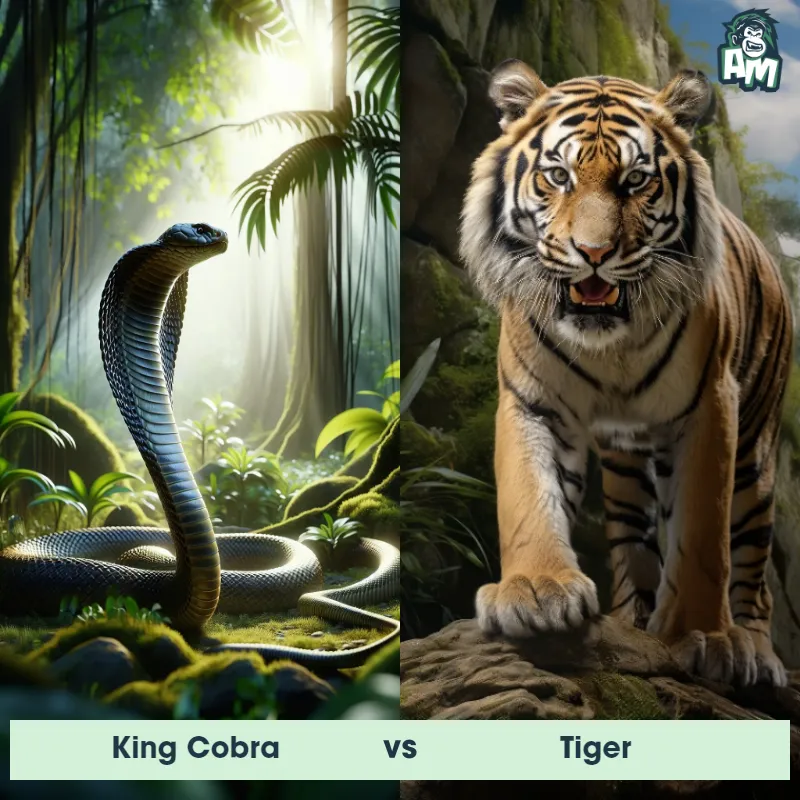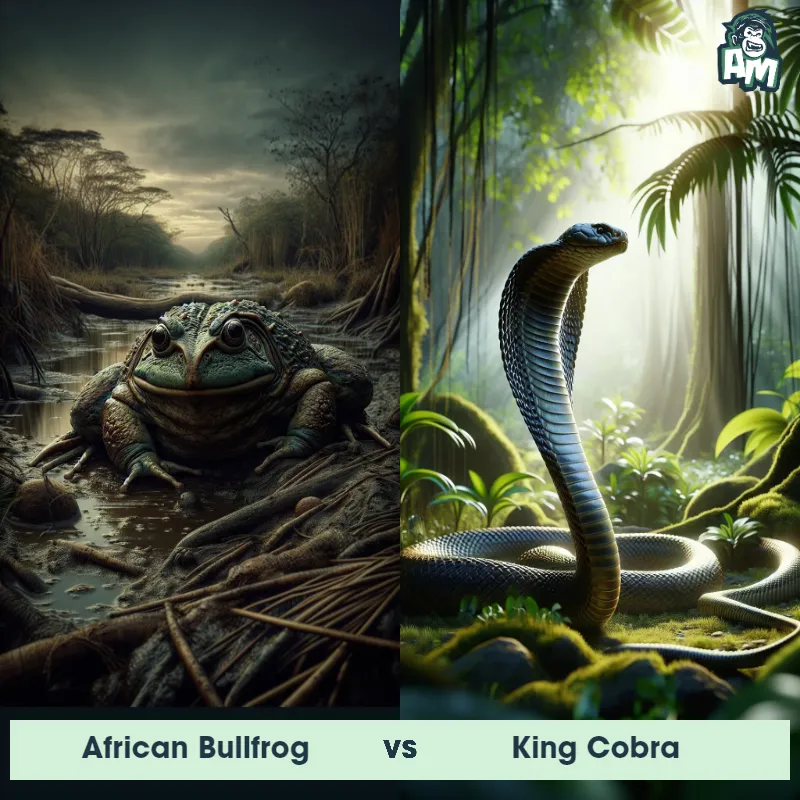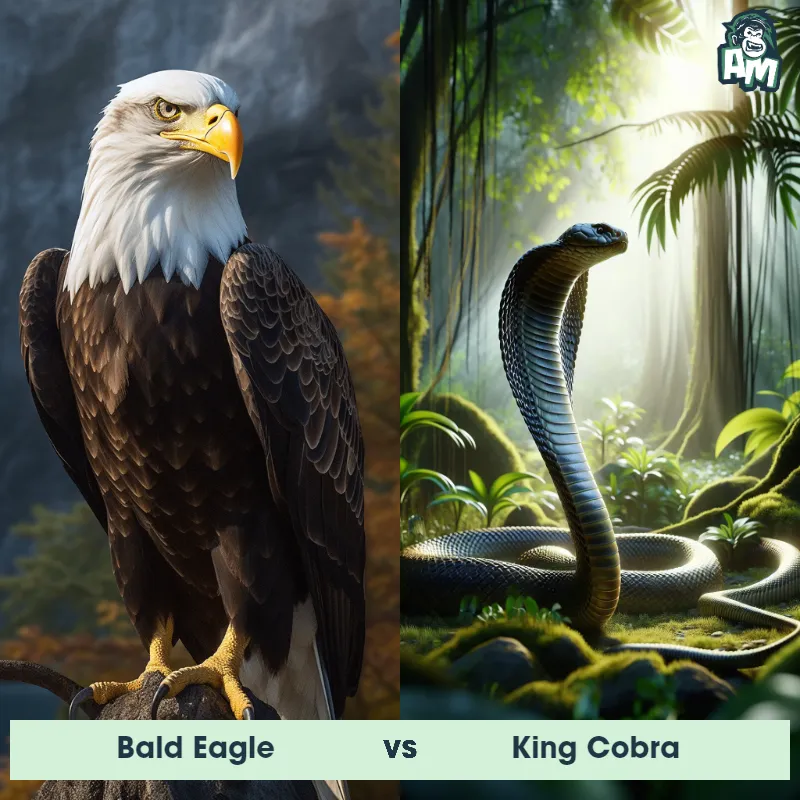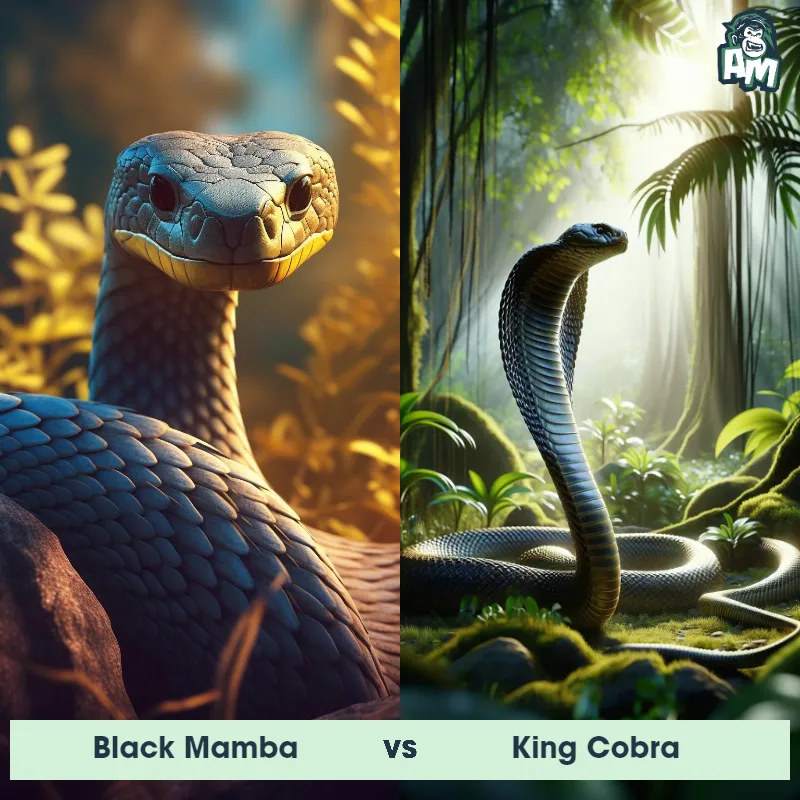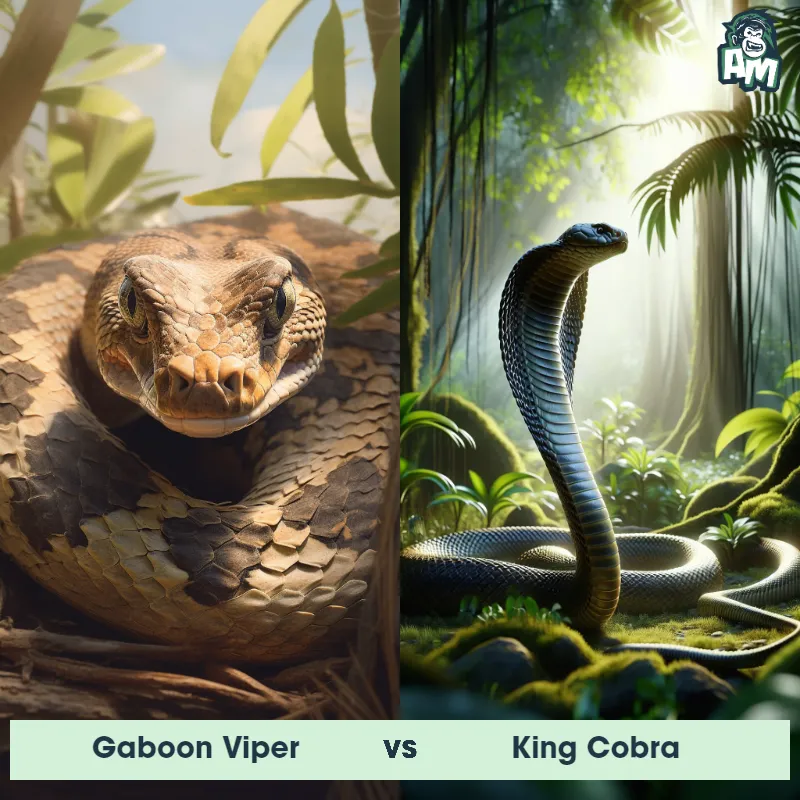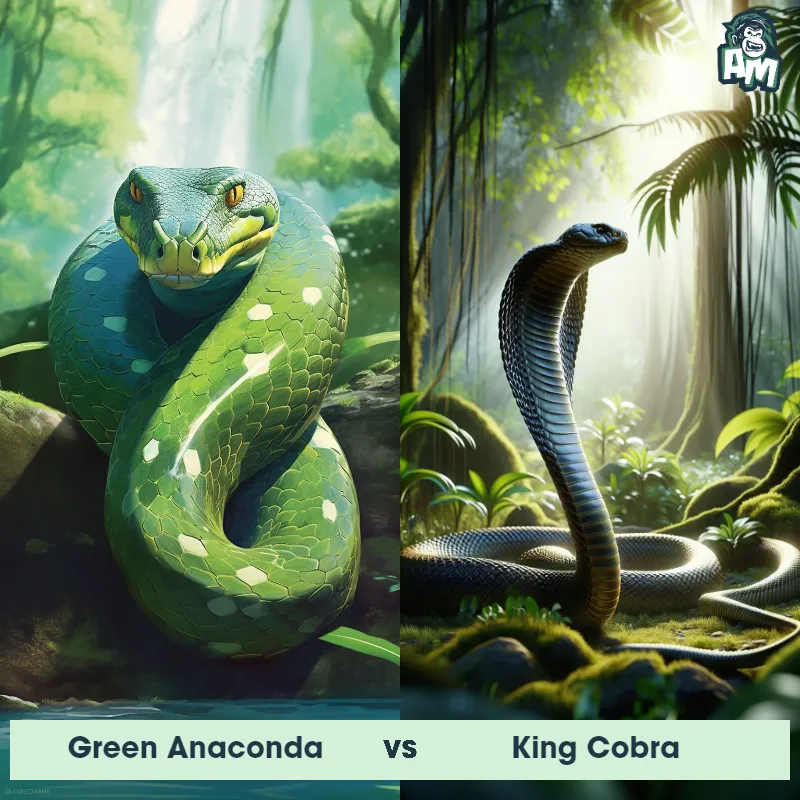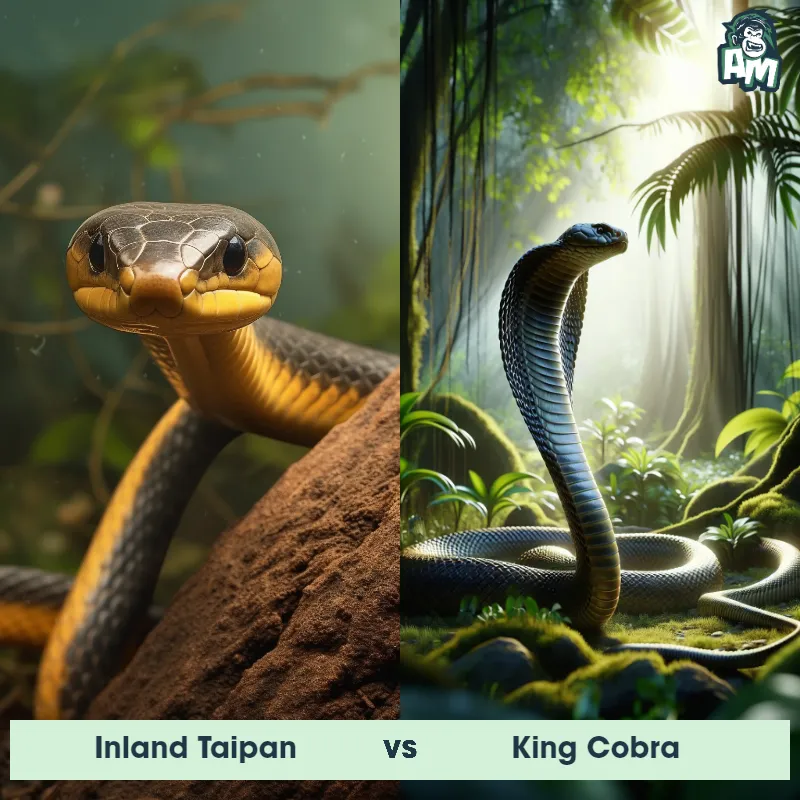The King Cobra
The King Cobra, also known as Ophiophagus hannah, is one of the most venomous snakes in the world. It can reach a length of up to 18 feet and is known for its impressive hood, which it displays when threatened.
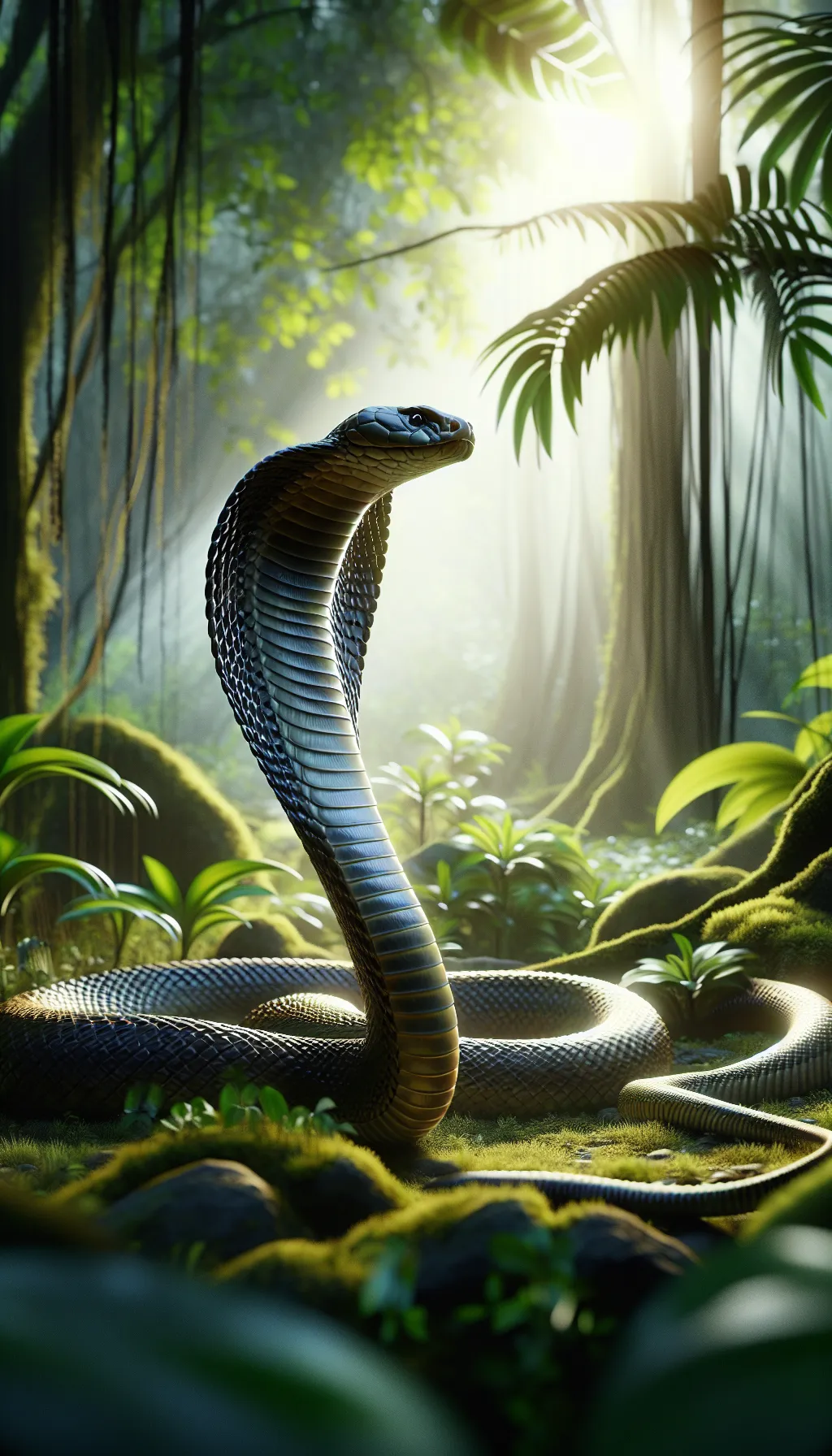
| King Cobra | |
|---|---|
| Size | Up to 18 feet (5.5 meters) |
| Weight | Up to 20 pounds (9 kilograms) |
| Speed | Speed: 12 mph (19.31 km/hr) |
| Key Strength | Venomous bite |
| Biggest Weakness | Vulnerable to larger predators |
| Scientific Name | Ophiophagus hannah |
| Family | Elapidae |
| Habitat | Forests, grasslands, and swamps |
| Geography | Southeast Asia |
| Diet | Rodents, birds, and other snakes |
| Lifespan | 20 years - 25 years |

The King Cobra
The King Cobra, also known as Ophiophagus hannah, is one of the most venomous snakes in the world. It can reach a length of up to 18 feet and is known for its impressive hood, which it displays when threatened.
Fun Fact: The King Cobra is not only the longest venomous snake on earth but also the only snake that builds nests to lay its eggs.
| King Cobra | |
|---|---|
| Size | Up to 18 feet (5.5 meters) |
| Weight | Up to 20 pounds (9 kilograms) |
| Speed | Speed: 12 mph (19.31 km/hr) |
| Key Strength | Venomous bite |
| Biggest Weakness | Vulnerable to larger predators |
| Scientific Name | Ophiophagus hannah |
| Family | Elapidae |
| Habitat | Forests, grasslands, and swamps |
| Geography | Southeast Asia |
| Diet | Rodents, birds, and other snakes |
| Lifespan | 20 years - 25 years |
King Cobra Matchups
We use AI to simulate matchups between the King Cobra and other animals. Our simulation considers size, strength, and natural predatory behaviors to determine the most likely outcome.
King Cobra: Diet, Predators, Aggression, and Defensive Behaviors
What do King Cobras eat?
King Cobras primarily feed on other snakes, including venomous ones. They also consume lizards, birds, and small mammals. Their diet mainly consists of snakes, and they are known to hunt and eat their own kind as well.
Do King Cobras have any predators?
Adult King Cobras do not have many natural predators due to their size and venomous nature. However, they may still fall prey to large mammals such as mongooses, birds of prey, and other snakes. Young King Cobras are more vulnerable and may be targeted by larger predators.
Are King Cobras aggressive?
King Cobras are known for their aggressive behavior, especially when cornered or threatened. They are highly territorial snakes and will not hesitate to strike if they feel threatened. They are also known to stand their ground and hiss loudly when approached.
Do King Cobras fight?
King Cobras are solitary snakes and are not generally known to engage in physical fights with other snakes. However, they may exhibit aggressive behaviors when competing for territory or mating. These encounters often involve threat displays, such as hooding and hissing, rather than actual physical combat.
How do King Cobras defend themselves?
King Cobras rely on their size, speed, and potent venom as their main defense mechanisms. When threatened, they will rear up, spread their iconic hood, and hiss loudly to intimidate potential predators or threats. If these displays fail to deter the threat, they will not hesitate to deliver a deadly bite.
What is the biggest weakness of King Cobras in a fight?
Despite their potent venom and intimidating size, King Cobras have a vulnerability to mongoose attacks. Mongooses are known to be immune to snake venom and are quick, agile predators that can overwhelm a King Cobra in a fight. In encounters with mongooses, King Cobras may end up being overpowered and killed.
Fun Fact: One astonishing feature of the King Cobra is its ability to rear up to one-third of its body length while still on the ground, giving it the ability to look a human in the eye.
Fun Fact: Unlike most snakes, the King Cobra possesses an impressive "warning system" by which it produces a loud hissing sound. This hiss is so unmistakable that it is said to resemble the growl of a dog mixed with the sound of a trumpet.




